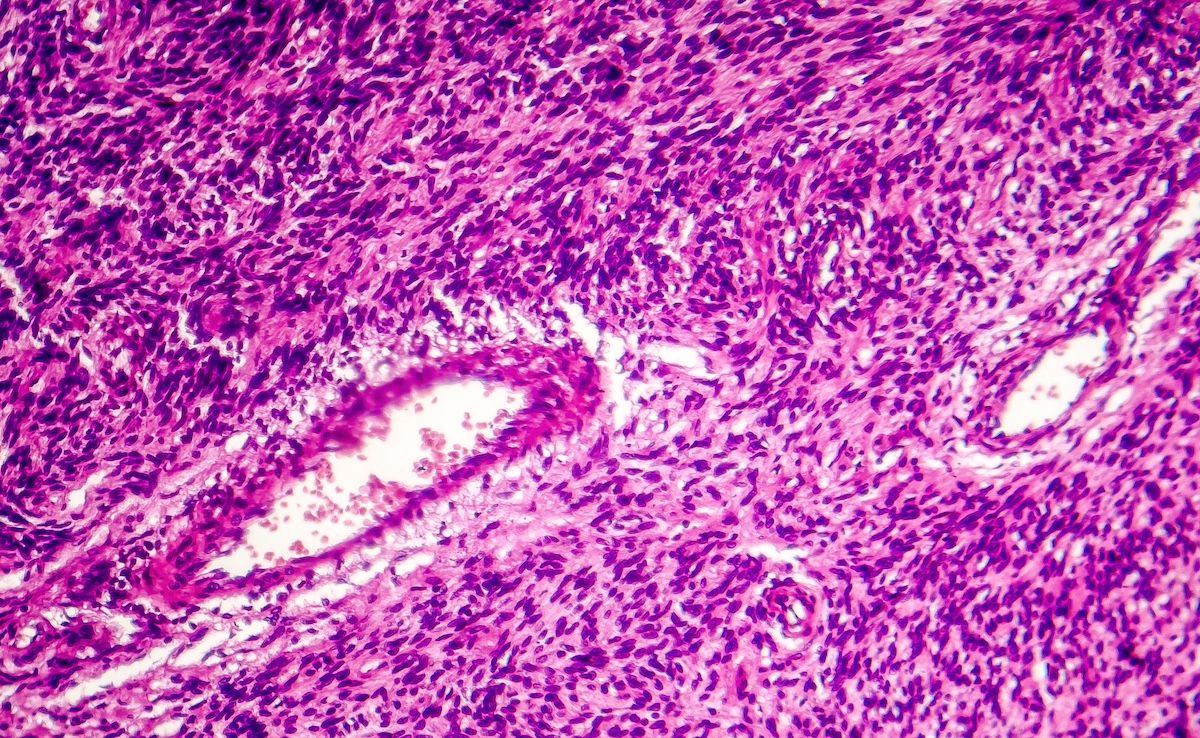News
Article
Patient/Physician Teamwork: Treating a Rare Oral Presentation of DLBCL
Author(s):
A very unusual case of lip-based diffuse large B-cell lymphoma (DLBCL) was treated successfully thanks to prompt diagnosis and chemotherapy treatments.
A recent case report highlights a 70-year-old man who developed primary extranodal diffuse large B-cell lymphoma (DLBCL) centered in his lip. The authors described in Internal Medicine how swift diagnosis, followed by subsequent management with rituximab-containing chemotherapies, helped the patient achieve complete responses (CRs).1 Extranodal DLBCL in the lip is so rare that it had been reported in the literature only twice before.2,3
Lymphoma diagnosis | Image Credit: © Vitalii Vodolazskyi - stock.adobe.com

Upon seeing a lip lesion, a physician’s first thought would not likely be DLBCL. Indeed, such a presentation is extremely uncommon. About 30% to 40% of malignant lymphomas are DLBCL, and of these, 30% manifest as extranodal lymphomas, the authors noted. Then, of these extranodal cases, primary DLBCL in an oral lesion, particularly in the lip, is very rare. The fact that hematologists got involved in this case early on to properly diagnose and treat it was potentially lifesaving.
Patient history. When the patient was first seen, the indurated lesion on his lower left lip had grown over the previous month to 30 mm × 20 mm. It was not painful but was red and had rubber-like hardness. No B symptoms such as fever, unexplained weight loss, or night sweats were present, either.
Nonetheless, the authors performed a punch biopsy of the lower lip, they described. “It revealed the diffuse proliferation and infiltration of atypical lymphocytes extending beyond the muscle layer, characterized by nuclear irregularity and coarse chromatin,” they wrote. Immunostaining revealed that the lesion was positive for CD10, CD20, BCL-2, and BCL-6, but negative for CD3, CD5, and EBER-ISH.
Further pathological, radiographic, and karyotyping data established the diagnosis as extranodal DLBCL of the lower lip, Ann Arbor stage IE, and germinal center B-cell type. Based on age, the patient’s international prognostic index score was low—1/5 points—so the team selected rituximab, cyclophosphamide, doxorubicin, vincristine, and prednisone (R-CHOP) chemotherapy to be administered over 8 cycles.
“The rituximab dosage was adjusted to 67% from cycle 1, considering the patient’s age, and cyclophosphamide and vincristine were reduced to 50% due to delayed bone marrow suppression starting from cycle 4,” they continued. “Posttreatment PET/CT confirmed a CR after 8 cycles.”
The patient’s CR continued for 4 years, until he experienced a relapse of DLBCL in the lower jaw and gingiva. This time, he received R-ESHAP: rituximab plus etoposide, cisplatin, cytarabine, and methylprednisolone. After the third cycle, he once again experienced a CR.
Earlier cases. In prior literature, just 2 patients had been documented to have extranodal DLBCL on the lips, the investigators wrote. The first one, a 58-year-old man, presented with a subcutaneous nodule on the left upper lip without surface changes, as well as with headaches.2 The diagnosis of DLBCL came 3 months after his initial presentation, and “R-CHOP therapy was initiated but discontinued after 2 cycles due to the patient’s poor general condition,” according to the authors of the current study.1
In the second instance, the patient, a 79-year-old woman, presented with an asymptomatic lump on the right upper lip and dislocation of the right nasal wing.3 It was initially thought to be a dental abscess and was treated with a root canal procedure. When the lump persisted and grew, doctors performed a biopsy that revealed DLBCL. Her initial treatment with chemotherapy and radiotherapy was successful, but she relapsed after 8 months.
Managing extranodal lesions in DLBCL is challenging, the authors concluded.1 In their patient’s case, the importance of a tailored treatment strategy in addressing relapse was clear. So, too, was the relatively early diagnosis, thanks initially—and significantly—to the patient’s own recognition of his lip lesion’s unusual features.
References
1. Seki H, Morita K, YasunagaM, et al. Primary extranodal diffuse large B-cell lymphoma presenting in the lips: a case report and literature review. Intern Med. Published online April 23, 2024. doi:10.2169/internalmedicine.3675-24
2. Kim TR, Bae KN, Son JH, et al. A case of cavernous sinus syndrome due to extranodal diffuse large B-cell lymphoma. Ann Dermatol. 2023;35(suppl 2):S300-S303. doi:10.5021/ad.22.084
3. Hindocha N, Nilsson J. Oral presentation of diffuse large B-cell lymphoma: a rare entity. Oral Surgery. 2019;12(4):332-334. doi:10.1111/ors.12430





